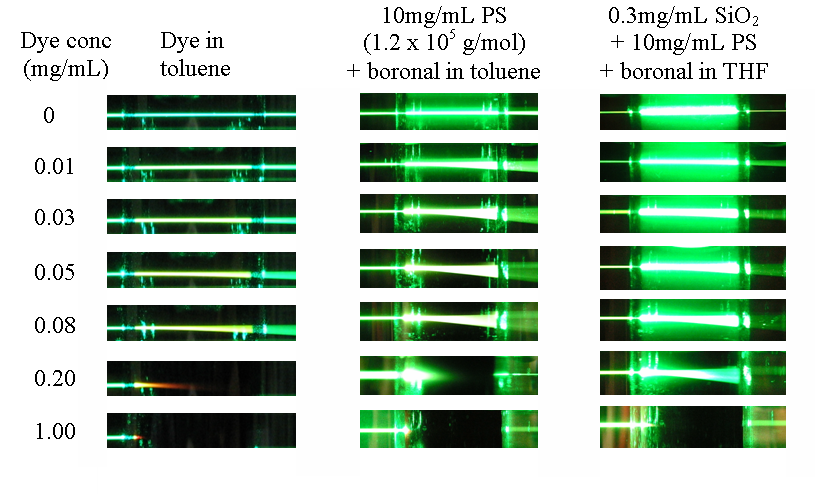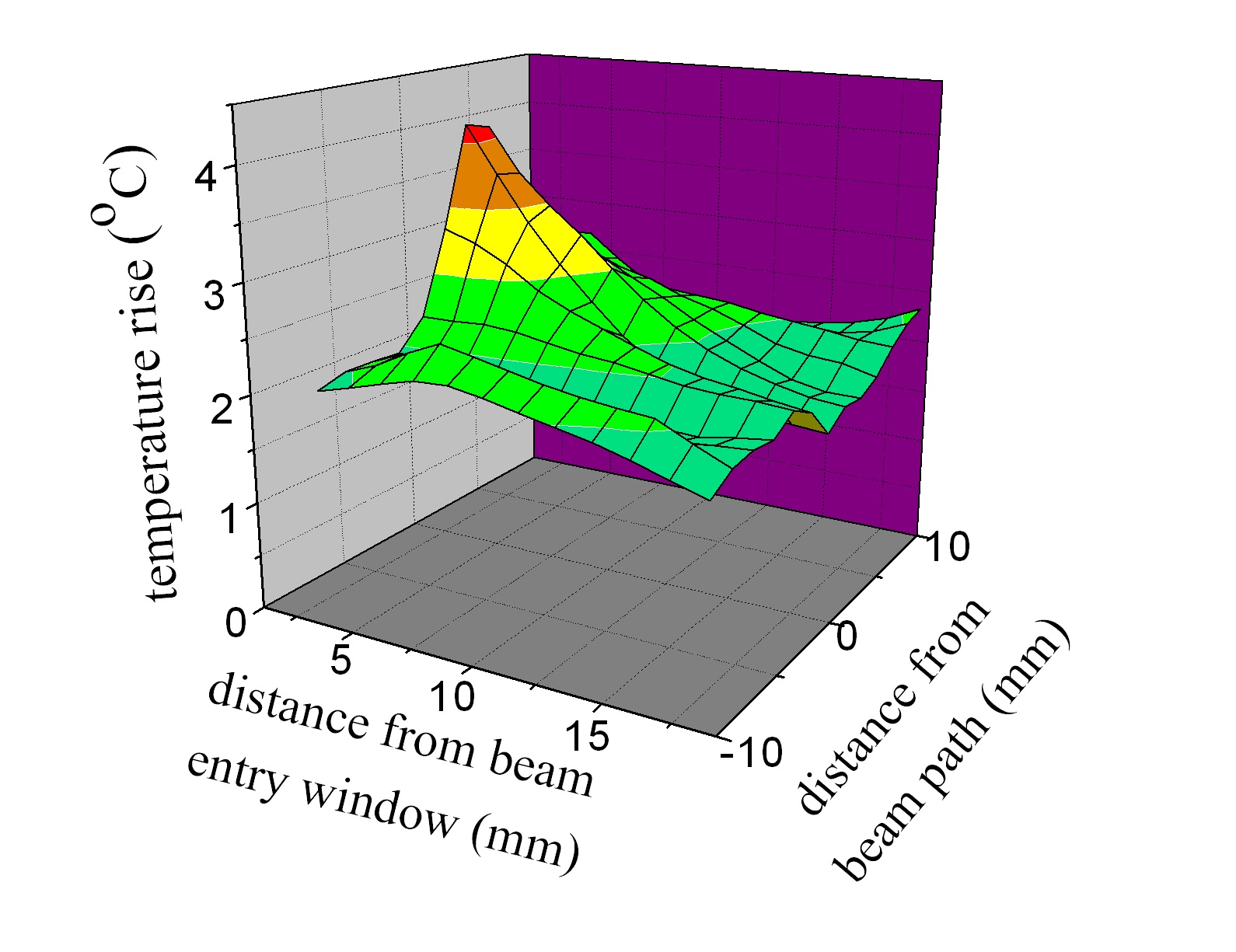AmericanChemicalSociety.com
Reports: AC7 48121-AC7: Dynamic Light Scattering from Light Absorbing Solutions
Thomas Seery, University of Connecticut
One
problem we address in dynamic light scattering of samples of high extinction
coefficient is the heating effects.
Light absorption causes localized heating and changes the scattering
geometry from cylindrical to conical.
The temperature increase and degree of coning is influenced by laser
power and by concentration of the absorbing species. A study of the temperature profile of the scattering cell
containing light absorbing solution shows a thermal gradient along the beam
path and perpendicularly above the volume illuminated by the laser beam. The apparent diffusion coefficient (Dapp)
of hard silica spheres and polystyrene dissolved in a light absorbing medium
were determined using the approach developed by Seery and Sehgal. The apparent
diffusion coefficient, Dapp, of the hard spheres is used to
calculate the ratio of temperature to viscosity, T/h,
using the Stokes-Einstein equation.
This provides a thermometer from which to obtain the apparent
temperature of the scattering volume illuminated by the laser.
Coning
Angle. The degree of coning was evaluated in two ways: from the coning images
and from the DLS data. Digital
photographic images were taken of light absorbing solutions under illumination
at varying dye concentrations. The first set consisted of solutions of boronal
in toluene, the second set had 10 mg/mL PS and boronal in toluene while the
third set was composed of 0.3mg/mL coated silica particles, 10 mg/mL PS and
boronal in THF. The solutions were
placed in the sample cell holder and illuminated at 500 mW. These images are depicted in Figure 1. Local Heating and Thermal Gradient. Solutions of polystyrene and silica spheres,
separately and in combination, in NMP, THF and toluene were illuminated with
500mW to 800mW laser beam. These were sufficiently transparent that there was
no significant difference in temperature between the sample inside the
scattering cell and the decalin bath.
This was true even in regions close to the beam path and even at high
laser powers demonstrating that no light was absorbed by these solutions. The temperature of the light absorbing solutions of NMP was
scanned at varying distances from the beam path. The closest distance at which temperature can be taken was
0.5 mm from the laser beam, because at the center of the beam the thermometer
probe absorbs light. Figure 2 shows the temperature profile of the light
absorbing sample (0.10 mg/mL boronal in NMP) 0.5 mm above the laser beam. The
temperature is maximum in the region closest to the entry window of the laser
beam and decreases to the exit window. The decrease in temperature with the
distance from the beam entry window creates a thermal gradient from left to
right across the beam path.
As shown in Figure 2, the temperature of the region that is
perpendicularly above the beam decreases with increasing distance from the
laser beam, creating a thermal gradient in the upward direction. The temperature was also observed to be
remarkably higher above the beam than along the side of the beam, indicating
that heat flow is favored more in the upward direction rather than in lateral
direction. The illuminated region
was heated by light absorption resulting in a decrease in density and an increase
in buoyancy. Consequently,
the heated volume floats, dissipating heat in the upward direction. As this volume rises, it cools,
creating convective flow within the scattering volume. Since the sample is continuously
illuminated by the laser throughout the duration of the experiment, absorption,
heating and convection occur continuously.
These initial measurements are being followed with modeling and
further data analysis to provide for efficient use of this approach with light
absorbing solutions.
Figure 1. Coning images of the laser beam in the scattering
cell for various samples.
Figure 2. Profile of temperature increase inside the
scattering cell
1. Gordon,
J. P.; Leite, R. C. C.; Moore, R. S.; Porto, S. P. S.; Whinnery, J. R., Journal
of Applied Physics 1964, 36 (1), 3-8.
2. Kohanzadeh,
Y.; Ma, K. W.; Whinnery, J. R.,. Applied Optics 1973, 12 (7),
1584-7.

Copyright © American Chemical Society


